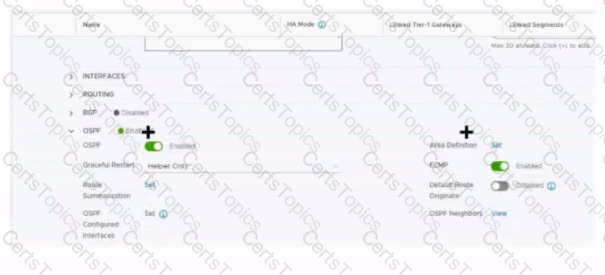VMware Related Exams
2V0-41.23 Exam







Which two of the following are used to configure Distributed Firewall on VDS? (Choose two.)
An administrator needs to download the support bundle for NSX Manager. Where does the administrator download the log bundle from?
Refer to the exhibit.
Which two items must be configured to enable OSPF for the Tler-0 Gateway in the Image? Mark your answers by clicking twice on the image.
